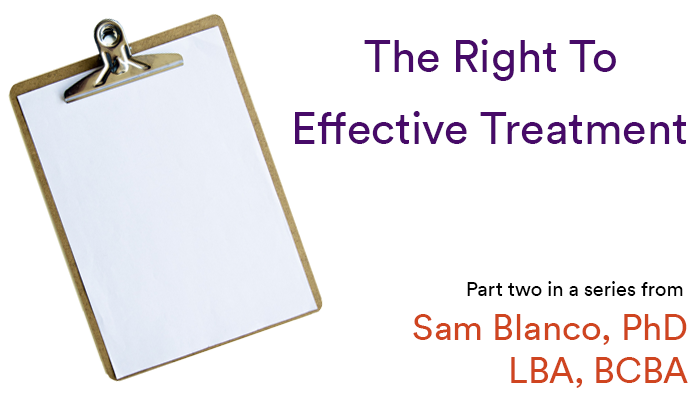Autism Awareness Month is over, but for many parents of children with autism, awareness is a daily battle. You would think that after decades of research, awareness of what autism would be more prevalent. But I still talk with parents who are struggling with relatives, friends, or strangers on the street being unaware, (and often incredibly rude,) about Autism.
One parent I work with recently asked me if I had a stock response for such rude responses. The truth is that even after seventeen years of working with people with autism, I am often at a loss for words when I encounter statements such as “I don’t even think your child has autism. This seems like a discipline issue.” OR “Why aren’t you working on _______ since you’re spending so much time on all of these other behaviors.” So, I turned to some of my colleagues for help.
Below is a list of some “stock responses” to help out in these awkward, and possibly offensive, conversations.
Response to statements like “Autism isn’t a real thing.”
“Autism is a real thing in our house. We’d be happy to have you come over and see first hand what it is and how it effects our family. In many ways, we need to live differently than we expected, but we have all learned to grow in ways we never expected. “
I think the best answer is probably to refer the person to a resource like Autism Speaks or ASAT. “Thanks for expressing an interest in what we’re doing. Our strategies are based on scientific principles and are supported by trained professionals. If you’d like to learn more about what it means, here’s a website you can look at.”
“Autism is a tricky disorder because sometimes people who have it have strengths in some areas but weaknesses in others. I know my child may seem just like any other kid, but he’s worked hard to get to this point, and he’s still working hard.”
“It may seem to you like my child is crying/tantrumming/etc. because he’s spoiled or just wants to get his way, but his ability to communicate with others is really impaired, so he gets easily frustrated. Thanks for your concern, but we’re working on helping him to overcome this.”
I think my response would depend on the day and my mood. On a BAD day, I might tell (yell at) the person to be thankful they are not faced with the same challenges in their children. On a more level day, I would attempt to use it as a learning experience and provide a logical response that Autism is a genetic disorder recognized by the Surgeon General and defined in the DSM-V. That it generally impacts the child’s social and communication skills and can often result in stereotypic motor movements like hand-flapping. I would go on to tell them about ABA and that there is no known cure.
“Autism is a neurological disorder so his brain works differently than other people. I can send you some info through email if you would like.” (Or end it after the 1st sentence and walk away)
“Thank you for your concern. It really takes a supportive community for us to manage each day. We prefer to not discuss this with people who don’t understand autism as our time is best spend with our child, rather than explaining ASD to others.”
“Autism isn’t a ‘thing’ – Well, it really is, but it’s a wide spectrum so almost every person with autism is different from any other one you’ve met. That’s why it can be hard to diagnose and treat, because of the wide range of the disability and variability across it.”
“Thanks, but I’d rather not discuss this with you” can go a long way, too!
Response to statements like “Why aren’t you working on _______ since you’re spending so much time on all of these other behaviors?”
“We are working tirelessly everyday to improve social behavior, we target the most interfering behaviors first and will systematically work through the list. “
“While _________ is important, there are other things that are more important at this time- _________ won’t matter if the child can’t tell you what he wants or needs. We’ll get to it eventually but only once it shows to be important and interfering with other things. “
“Or, we ARE working on it, but it takes a long time to change behaviors.” (maybe even insert a “You could help us by…” line)
“Yes we are working on that too. We still have work to do. And how is your…”
Response to statements like “What’s his problem anyway?”
“He just learns some things differently and a bit slower than others; but you should see how smart he is in (describe an area of strength).”
“There are some things that really get him mad, but he is getting better and is learning to tell us what the problem is.”
Responses to “I’m sorry, but I don’t think my kids can be around your kid. I’m worried about them picking up some of his problem behaviors.”
“I’d say that’s too bad, he’s a great kid and really helps other people in ways that he can; he’s never had a problem with anyone.”
“I tried to think of something good and positive, refine to say/write…but you know me…I would give them the middle finger :)”
More general advice:
I have worked with a parent who had business cards printed that had 2-3 websites listed on it. When the person started up, the parent handed the card to them and just said something like: “That is a big question that would take too much time to answer here so here are some resources for you to check out.” This allowed them to shut it down but in a way that was not confrontational.
Remember that you don’t have to say anything, especially when it’s to a stranger. It is perfectly okay not to share personal details about your child’s diagnosis.
So you can see I try to not directly contradict someone saying something; I downplay the concern, reflect back, gently push back, and then stop talking and redirect the conversation if I can.
Thank you to Cheryl Davis, Michael Dorsey, Kari Dunlop, Dana Reinecke, Krishna Ruano, Sarah Russell, Erin Stone, and Tom Zane.
WRITTEN BY SAM BLANCO, PhD, LBA, BCBA
Sam is an ABA provider for students ages 3-15 in NYC. Working in education for twelve years with students with Autism Spectrum Disorders and other developmental delays, Sam utilizes strategies for achieving a multitude of academic, behavior, and social goals. She is also an assistant professor in the ABA program at The Sage Colleges.


